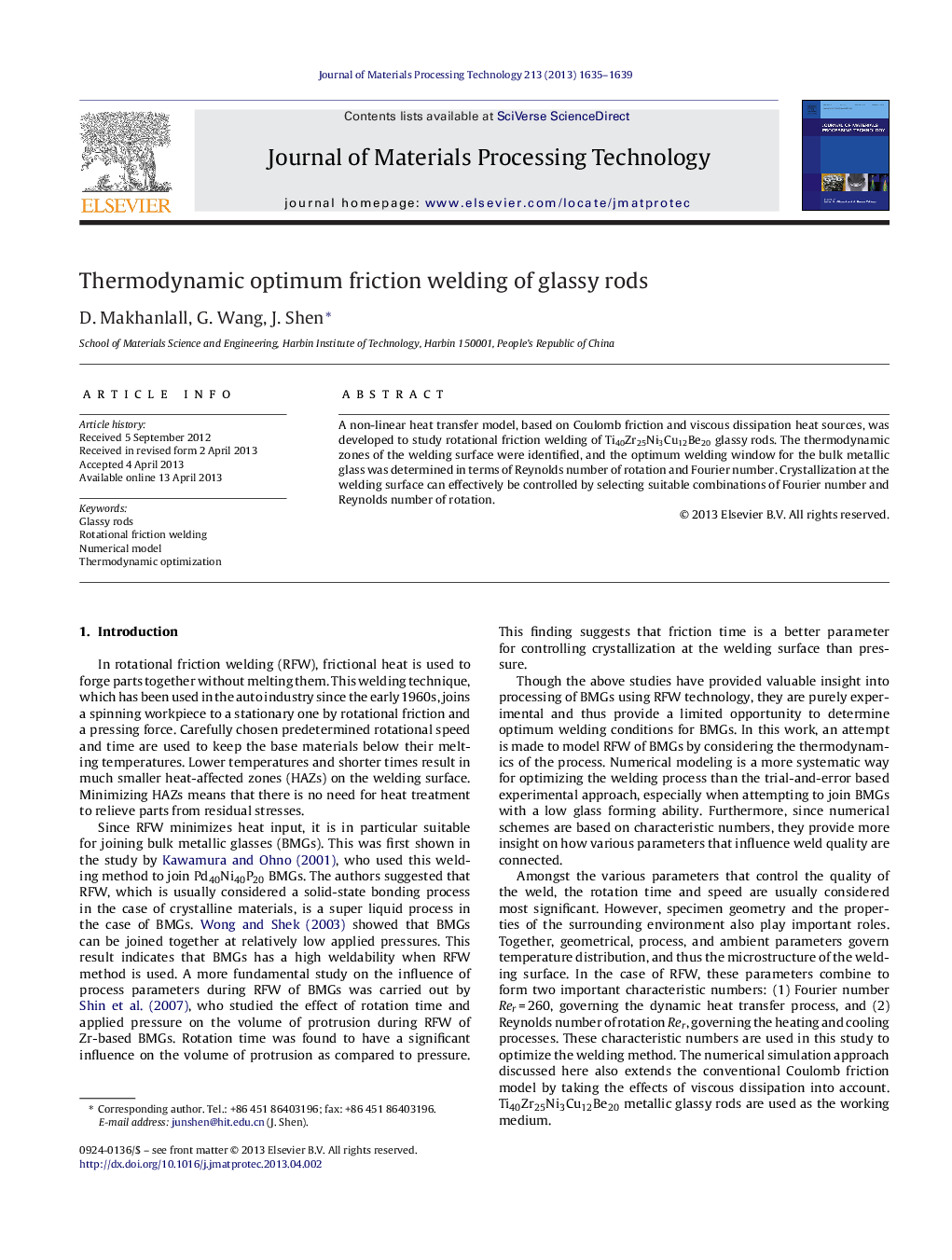| Article ID | Journal | Published Year | Pages | File Type |
|---|---|---|---|---|
| 794745 | Journal of Materials Processing Technology | 2013 | 5 Pages |
•A combined heat source model is used to evaluate friction welding of glassy alloys.•Ti-based bulk metallic glass has been welded by friction welding.•Crystallization can be controlled by Reynolds number of rotation and Fourier number.
A non-linear heat transfer model, based on Coulomb friction and viscous dissipation heat sources, was developed to study rotational friction welding of Ti40Zr25Ni3Cu12Be20 glassy rods. The thermodynamic zones of the welding surface were identified, and the optimum welding window for the bulk metallic glass was determined in terms of Reynolds number of rotation and Fourier number. Crystallization at the welding surface can effectively be controlled by selecting suitable combinations of Fourier number and Reynolds number of rotation.
